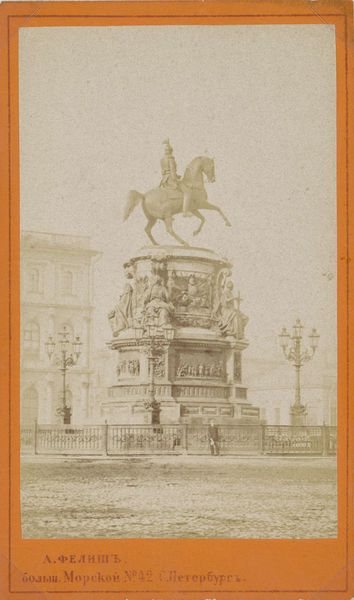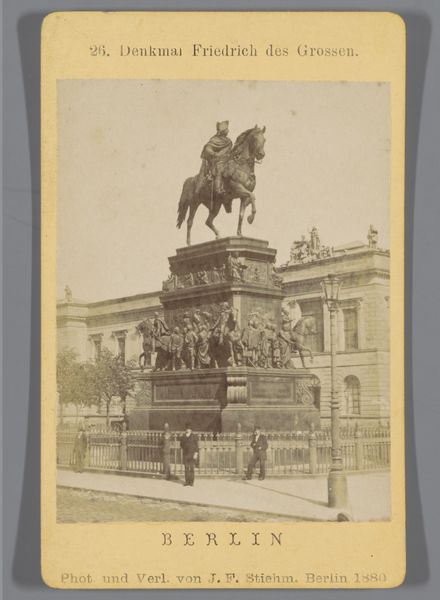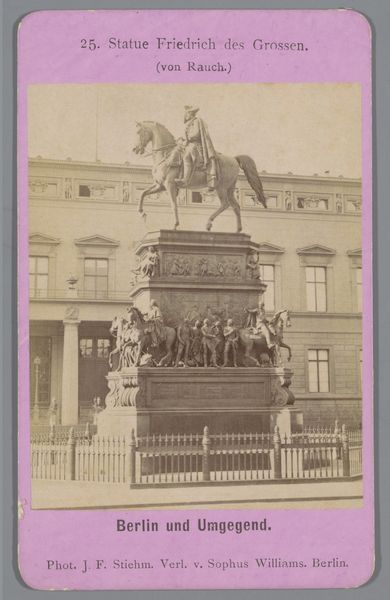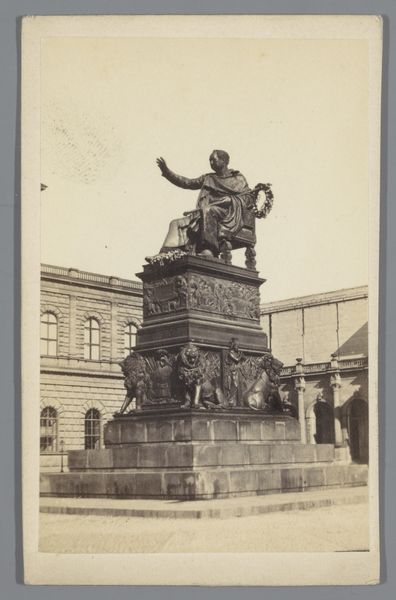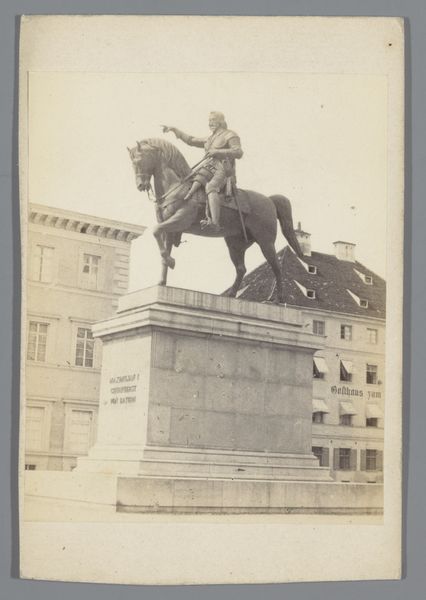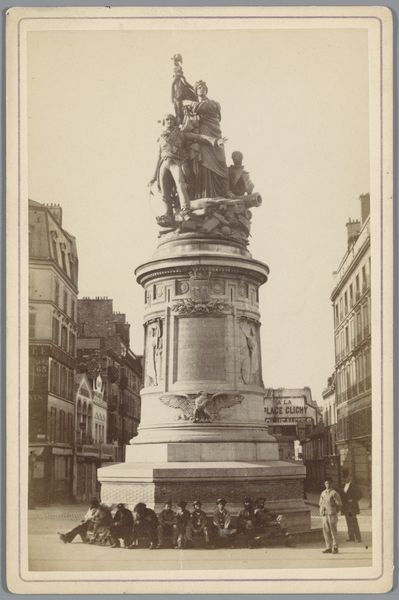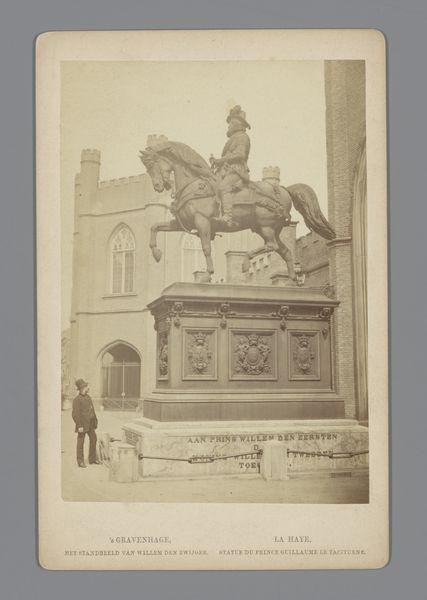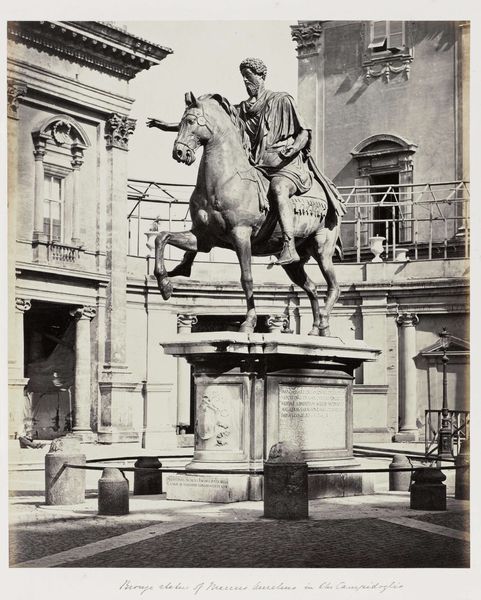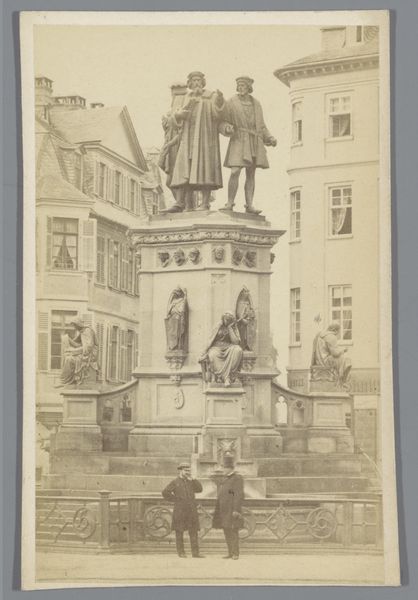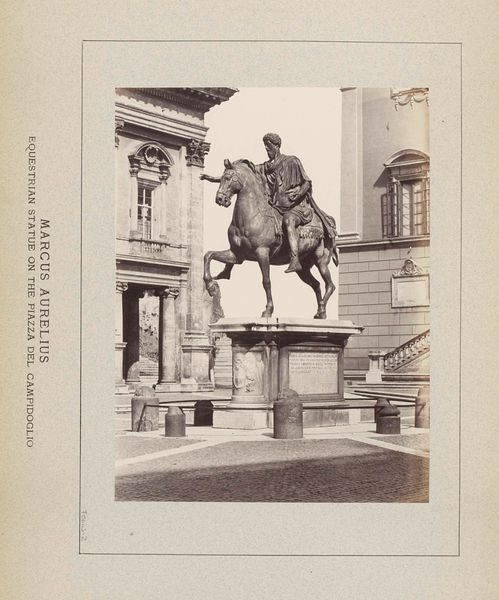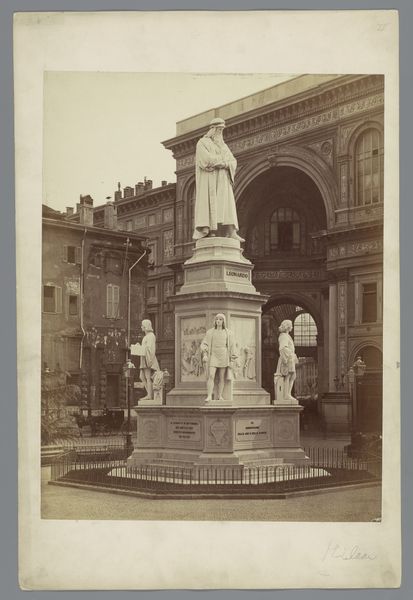
Gezicht op het Josefsplatz in Wenen met ruiterstandbeeld van Jozef II door Franz Anton Zauner c. 1875 - 1885
0:00
0:00
Dimensions: height 140 mm, width 100 mm
Copyright: Rijks Museum: Open Domain
Editor: This is a gelatin silver print titled "Gezicht op het Josefsplatz in Wenen met ruiterstandbeeld van Jozef II door Franz Anton Zauner," placing it around 1875-1885. The cityscape, in sepia tones, is quite striking. It feels very much like a study in power and permanence. What symbols jump out at you? Curator: The equestrian statue, of course, speaks volumes. The horse, controlled but powerful, and the rider, presumably Joseph II, embody enlightened absolutism. The horse is a recurring motif of strength and command, traceable back to antiquity, and continues to resonate today, doesn’t it? Editor: Absolutely. And I see those figures depicted on the pedestal of the statue; are those also significant? Curator: Very much so. These are not mere decorations, they are carefully placed allegories that buttress the ruler’s image. What virtues do you see being emphasized, perhaps through gesture or grouping? The attire suggests Neoclassical influence. Editor: I’m guessing justice, perhaps wisdom, maybe military prowess. So, even in a photograph of a statue, we're dealing with layers of symbolic representation meant to shape public perception, building a visual argument, essentially. Curator: Precisely. Think about how photography, at this time, became another tool to disseminate these idealized versions of power and order. This image not only captures the statue but reproduces and extends its intended message. Do you see how the relatively new medium serves to amplify very old ideas? Editor: That makes a lot of sense. It's a copy of a copy, spreading an idea even further! I hadn’t thought about it that way before. Thanks! Curator: It is truly fascinating how enduring images adapt and morph through cultural memory. A static image reveals evolving attitudes about history.
Comments
No comments
Be the first to comment and join the conversation on the ultimate creative platform.
